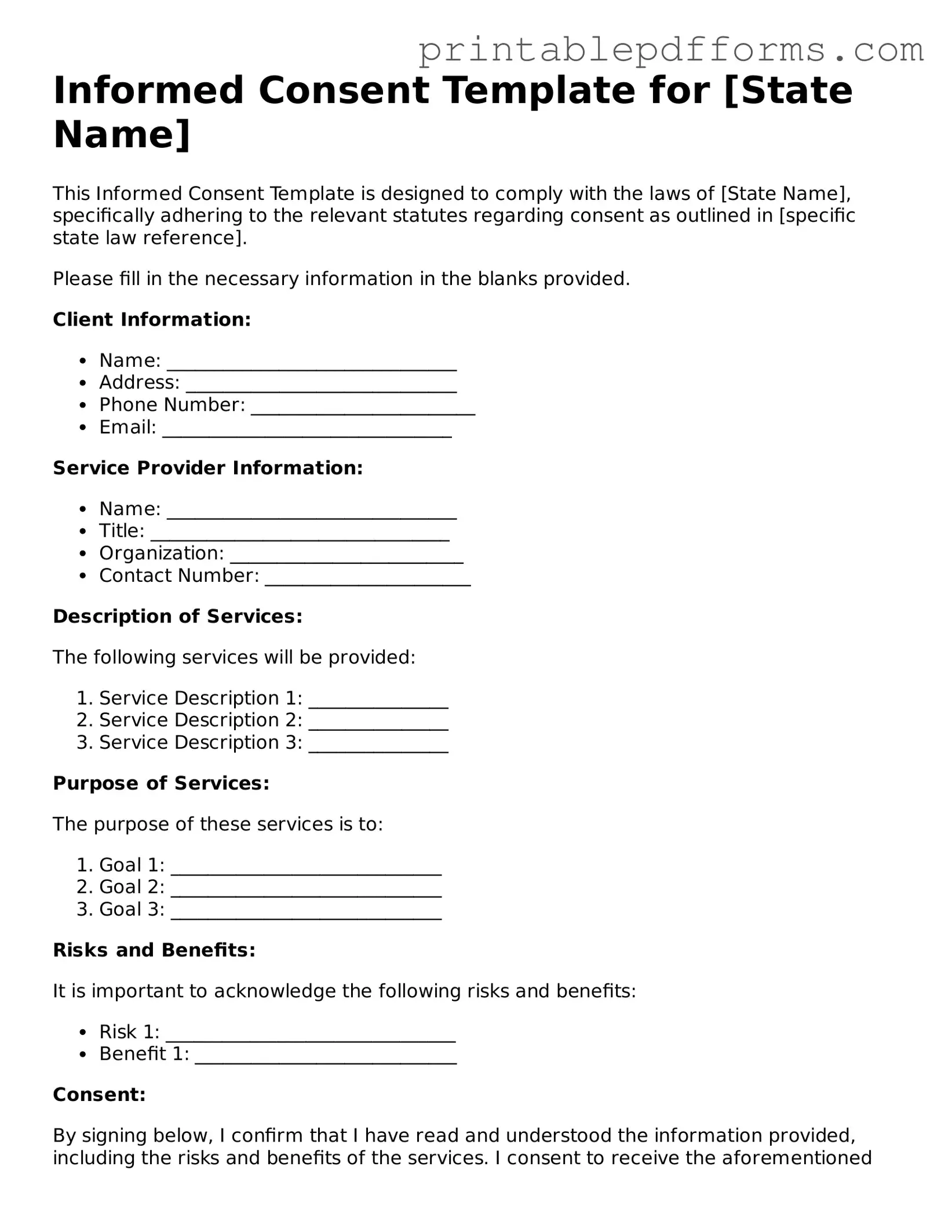Informed Consent Template for [State Name]
This Informed Consent Template is designed to comply with the laws of [State Name], specifically adhering to the relevant statutes regarding consent as outlined in [specific state law reference].
Please fill in the necessary information in the blanks provided.
Client Information:
- Name: _______________________________
- Address: _____________________________
- Phone Number: ________________________
- Email: _______________________________
Service Provider Information:
- Name: _______________________________
- Title: ________________________________
- Organization: _________________________
- Contact Number: ______________________
Description of Services:
The following services will be provided:
- Service Description 1: _______________
- Service Description 2: _______________
- Service Description 3: _______________
Purpose of Services:
The purpose of these services is to:
- Goal 1: _____________________________
- Goal 2: _____________________________
- Goal 3: _____________________________
Risks and Benefits:
It is important to acknowledge the following risks and benefits:
- Risk 1: _______________________________
- Benefit 1: ____________________________
Consent:
By signing below, I confirm that I have read and understood the information provided, including the risks and benefits of the services. I consent to receive the aforementioned services.
Client Signature: _____________________________ Date: ________________
Provider Signature: ___________________________ Date: ________________
